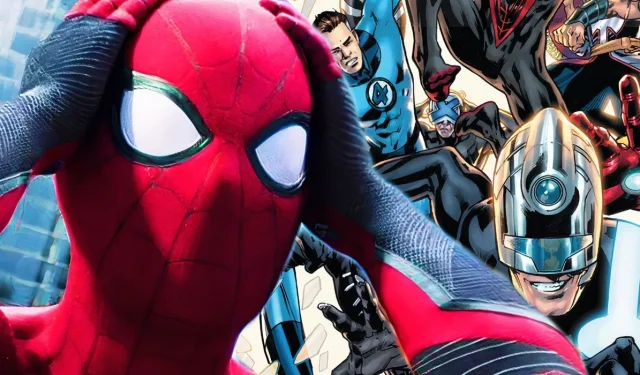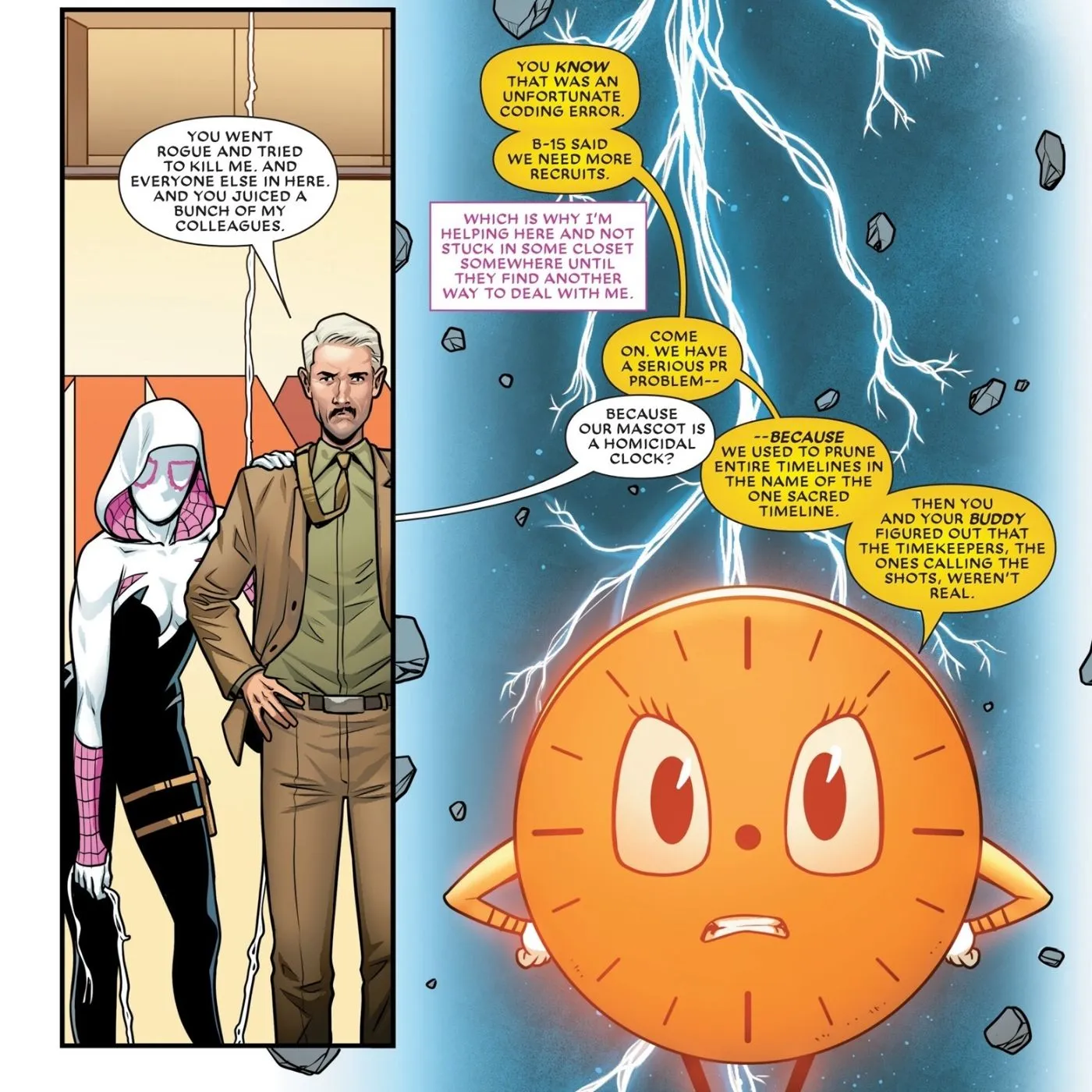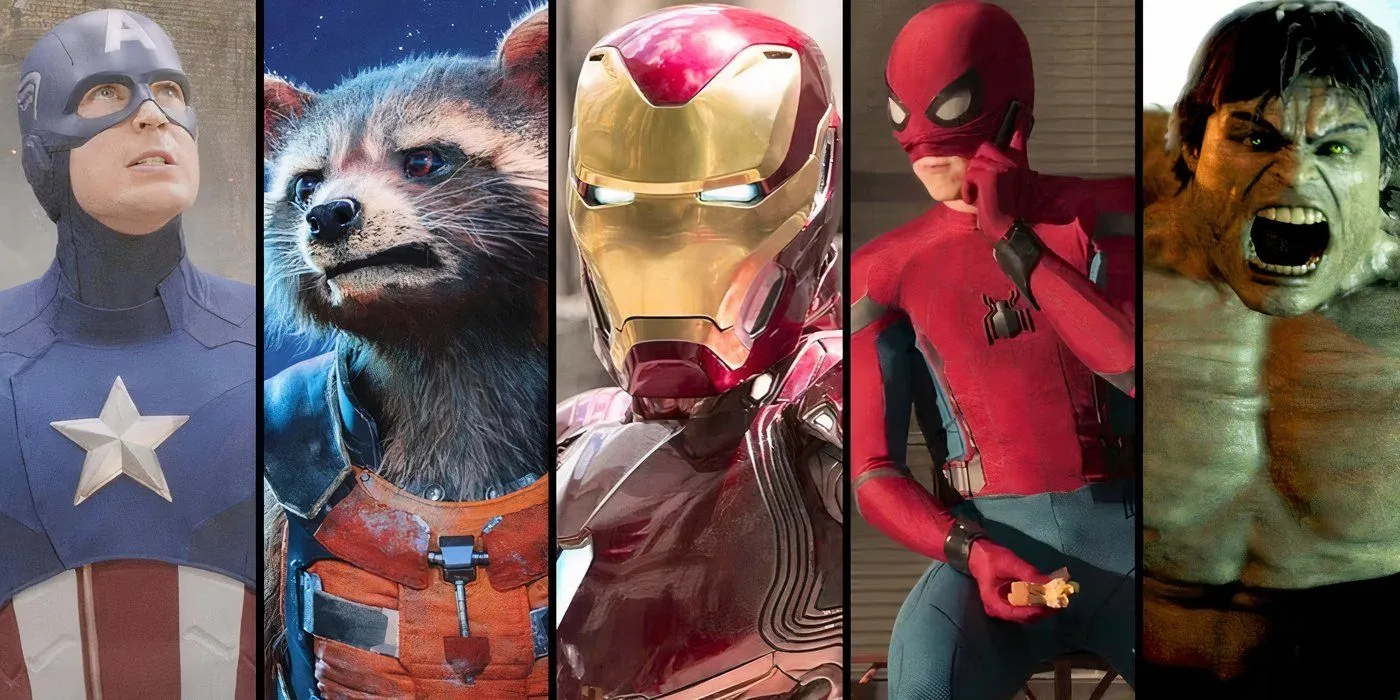
Warning: Spoilers Ahead for TVA #1!
Since its inception into the Multiverse Saga, the Marvel Cinematic Universe (MCU) has expanded dramatically, allowing for an endless array of timelines in which various incarnations of heroes and villains coexist. Significant titles like Spider-Man: No Way Home, Doctor Strange in the Multiverse of Madness, and Loki have delved deeply into this expansive concept. However, until now, these explorations focused primarily on the cinematic and television universes. In a groundbreaking development, the MCU has officially bridged its multiverse with that of Marvel Comics, creating limitless new opportunities for storytelling.
In the debut issue of TVA #1, authored by Katharyn Blair with illustrations by Pere Pérez, we see Spider-Gwen joining a multiversal task force alongside notable characters like Jimmy Hudson (Wolverine’s son from Earth-1610), Captain Carter, and Gambit. This ensemble evokes a modern-day version of the Exiles, a team of heroes poised to protect multiple realities, but with one significant twist: they collaborate with MCU characters. This partnership introduces a fresh layer to the multiversal narrative, never before seen in Marvel Comics.





While Marvel Comics has previously introduced its own version of the Time Variance Authority (TVA), the TVA presented in TVA #1 directly reflects the one seen in the MCU, incorporating beloved characters like Miss Minutes, Ouroboros (O.B.), B-15, and Mobius. The comic makes it clear that these are not mere counterparts but the actual embodiments of those characters as established in the MCU. Furthermore, a pivotal moment arises when Spider-Gwen references the actions of Loki from the MCU, particularly his pivotal contributions to saving the multiverse, as fans witnessed in the second season of Loki.
This narrative framework means that characters from various Earths—including Earth-65’s Spider-Gwen and Earth-1610’s Jimmy Hudson—are now intricately linked to the MCU’s TVA. This crossover provides Marvel Comics characters the opportunity to interact with live-action counterparts, cultivating a potential for exciting blended storylines in the future.
Every Character in TVA #1 Can (& Should) Be Introduced in the MCU Immediately
Spider-Gwen & Jimmy Hudson: No MCU Origin Story Needed

The revelations within TVA #1 set the stage for an exciting future where characters like Spider-Gwen and Jimmy Hudson can seamlessly integrate into the live-action MCU. While Captain Carter and Gambit have previously been depicted within the MCU, the live-action universe has yet to bring Spider-Gwen and Jimmy Hudson to the screen. Remarkably, due to their involvement in TVA #1, these characters are already part of the MCU framework, eliminating the need for extensive origin storytelling.
Previously, audiences have seen diverse versions of beloved characters like Spider-Man and Wolverine. With Spider-Gwen and Jimmy Hudson established within the TVA, they are poised to jump into future live-action narratives without cumbersome backstories to complicate their introductions. Interested viewers can simply refer to their comic arcs for context, allowing for a more fluid transition into the MCU.
Redefining Origin Stories in the MCU Through the Marvel Comics Multiverse Connection
Streamlined Origin Stories for Heroes & Villains

With the revelations from TVA #1, the MCU now has a unique opportunity to introduce Spider-Gwen, Jimmy Hudson, and potentially any Marvel Comics character, into its cinematic landscape. This was subtly hinted at in Deadpool & Wolverine, showing how characters could traverse between the comic and cinematic universes using TVA technology.
TVA #1 flips this concept, demonstrating how MCU characters can be reimagined within the comic medium. The shift in narrative presents new dynamics—where a character like Age of Apocalypse Wolverine becomes live-action upon entering the MCU, while a character such as B-15 transitions into a comic book format when featured in Marvel Comics. This innovative storytelling approach underscores the boundless potential for character interaction and narrative creativity within the MCU.
Traditionally, introducing a comic book character to live-action necessitated a comprehensive origin story. However, this new multiverse connection allows the MCU to incorporate characters directly, streamlining their narratives by featuring them plucked straight from the comics thanks to the TVA’s capabilities. This means that fully fleshed-out characters can jump right into their cinematic journeys without convoluted backstories.
The Implications of Linking Marvel Comics’ Multiverse to the MCU
The Entrance of Marvel’s Greatest Current Multiversal Villain to the MCU

Embracing the reality that any character from the Marvel Comics multiverse could potentially appear in live-action without elaborate narrative explanations is thrilling for fans. However, it also poses risks for the MCU’s heroes. Currently, Marvel’s most formidable multiversal villain, the Maker, exemplifies this danger. Emerging from Earth-1610, the Maker has displayed the ability to reshape entire realities with relative ease.
In current storylines featuring the Ultimate Universe, the Maker’s manipulative capabilities enable him to assert control over Earth-6160, demonstrating a precedent for possible interference within the MCU’s own continuity. With Jimmy Hudson already bridging the gap from comics to the MCU, it sets the stage for the Maker’s potential inclusion, raising the stakes for all Marvel heroes.
The prospect of the Maker serving as a future antagonist in the MCU is both exciting and daunting. However, the key takeaway from this development is clear: Marvel has successfully established a connectivity between its comic universes and the MCU, heralding a revolutionary chapter for its storytelling landscape.
TVA #1 by Marvel Comics is now available for readers to explore.




Leave a Reply